Energy, Environment and Climate Change
The Energy and Environment Programme (EEP) teaches and carries out policy-focused research in energy, environment, and climate change. Despite the pandemic, EEP faculty and researchers published eleven papers in peer-reviewed journals, five papers in conference proceedings, one book chapter, and eight articles in national newspapers/magazines and delivered invited talks in other institutions. EEP faculty prepared a NIAS Policy Brief on a transition plan for the power sector. They conducted two stakeholder consultation workshops involving participants from the government and industry as well as experts from academia andcivil society. While NIAS recommendations related to thermal power plants are under implementation by the Government of India, the government also seeks periodic inputs from EEP faculty on matters related to energy and climate change policies. In the coming year, EEP faculty will continue to focus on emerging research areas, such as affordable energy security, water security, sustainable cities, and urban emissions.
| R Srikanth Professor and Dean School: School of Natural Sciences and Engineering Programme: Energy, Environment and Climate Change Room no: S-11 Tel: 080-2218 5135 Fax: 080-2218-5028 rsrikanth@nias.res.in |
Visiting Professor
Doctoral Student
Post-Doctoral Associate
Homi Bhabha Chair Professor
Post-Doctoral Associate
Assistant Professor
Professor

Assistant Professor

Doctoral Student
Dr. Raja Ramanna Chair Professor

Associate Professor
| Energy Studies Energy studies includes a very wide range of sub-themes. EECP contributes to many of these sub-themes through its research. This includes studies on the power sector specifically, e.g., evaluating reforms in the power sector, the role and scope of clean coal technologies, developing models for optimal electricity supply, and analysis of inter-regional power flows. Faculty and scholars at the EECP also do research on the energy sector as a whole, including and beyond the power sector, e.g., exploring the role of renewable energy systems and their potential impacts, modelling of solar thermal systems, exploring the potential for sustainable fuels in the transport sector, development of integrated energy-environment-economy models, evaluating the implications of energy transitions for labour and other developmental indicators, and energy use and mechanisation in agriculture, among others. |
| Environmental Studies Faculty and research scholars at the EECP are involved in multiple projects that study various aspects of the interaction of human systems and settlements, and the environment. This includes studies on air quality and its impacts on public health, environmental policy and jurisprudence in coal mining regions, integrated water resource management, sustainable transportation in cities, vulnerability and adaptability of ecosystems, ecosystem services with a focus on aquatic systems, evaluating airshed properties of urban regions, rehabilitation of degraded ecosystems, and modelling urban micro-climates, among others. |
| Climate Studies Research focusing specifically on climate change, includes studies on climate change mitigation, adaptation, and understanding and addressing vulnerability to climate change. This includes the study of global environmental and climate change policies, climate change negotiations, and exploring ideas of equity in climate action. EECP also studies the nature and scale of socio-economic impacts of weather variability, extreme events, and climatic uncertainty on production of goods and services. Understanding existing responses to ongoing changes and exploring methods of strengthening these responses with access to scientific knowledge and technological instruments is an important part of this work. |
| Interaction between Earth and Human Systems Funding Agency: Ministry of Earth Sciences, Government of India Project Description: This project is primarily designed to conduct PhD dissertation research inter alia in the following areas:
Besides, research is also being conducted on the microclimate of select metropolitan services and air pollution models. |
| Climate Change Mitigation in India’s Third National Communication Funding Agency: Ministry of Environment, Forests, and Climate Change, Government of India Project Description: This project aims to provide a draft of the chapter on “Climate Change Mitigation” for India’s Third National Communication to the UNFCCC. Climate change mitigation is one of the most important focus areas in climate policy. It encompasses a vast arena of interventions, policies, technological development, and deployment, that are aimed at reducing greenhouse gas (GHG) emissions, consequently leading to limiting the rise in global surface temperatures to below certain limits. The need to limit GHG emissions on a global scale is increasingly becoming an important determinant of energy policy, even in developing countries such as India. This is a consequence of the fact that effective global climate action requires some form of contribution to climate change mitigation from all nations. The nature and scale of such contributions may of course vary based on the formulation of domestic policies in accordance with national circumstances, historical responsibility, and an assessment of the country’s role in the global arena. In this context, India’s contribution to climate change mitigation far exceeds its past and current responsibility in causing climate change, despite the developmental challenges the country faces, which are now further exacerbated by the prolonged COVID-19 crises on the domestic as well as international front. This is the context in which the assessment of India’s efforts on climate change mitigation will be evaluated and reported. Potential and existing interventions to reduce emissions by either increasing energy efficiency, substituting fossil fuels with green energy technologies, or replacing processes themselves where possible, undertaken in the country since the Second National Communication, will be discussed in this chapter. The chapter will discuss these in the context of India’s role in climate change mitigation as understood within the guiding principles of the UNFCCC, that underline the importance of equity and differentiated responsibility in climate action. |
| Role and Viability of Nuclear Power Funding Agency: Nuclear Power Corporation of India Limited (A Government of India Enterprise) Project Description: Nuclear Power Plants (NPPs) are based on well-established, safe, and environment-friendly technologies in India that can generate power on a 24x7 basis unlike VRE sources. Based on the administrative approvals and financial sanctions accorded by the Government for future NPPs, the total installed nuclear power capacity in India is expected to rise to 22,480 MW by the middle of the next decade. Considering the total TPP capacity of 205 GW in India today and the aspirations of India’s young population there is a need to develop a national policy and strategy along with action plans to expedite the construction of NPPs in time to replace a significant part of TPP capacity. In the long term, given the imperatives of mitigating climate change, while meeting India’s developmental requirements, there is a need to realistically assess the potential for NPPs and conduct and honest and transparent comparative analysis of nuclear energy technology vis-à-vis other technologies in terms of their best possible use in the Indian context. Such an analysis must also consider the strategic role and multiplier effect of NPPs on India’s economy as a whole. |
| A Status Report on the Rare Earth (RE) Ecosystem in India Funding Agency: IREL (India) Limited (A Government of India Enterprise) Duration: 9 months Project Description: The focus of the report will be on a RE Policy Framework for the Government of India to act on. A critical review of the current global RE industry will form the first section of the report. The second part will take stock of the status of RE developments in India. It will identify the prospects and problems for the development of a viable RE industry in the country. The third part will link Indian capabilities to the global scene and identify a set of options with a ranking scheme that has both supply (technology) side as well as demand (product/ market) side dimensions. The final section of the report will link the different strands into an integrated picture of the various options for consideration of decision and policy makers at the Government of India level. The aim of the report will be to provide a comprehensive assessment of commercial as well as strategic RE value chains. The focus will be on attaining self-sufficiency and meeting domestic needs through all available means that includes both indigenous development as well as technology transfer. The report will only address the downstream part of the RE value chains. In view of the importance of “Green Energy” as well as the initiatives already taken pertaining to Permanent Magnets in India, the report will lay special emphasis on these value chains. |
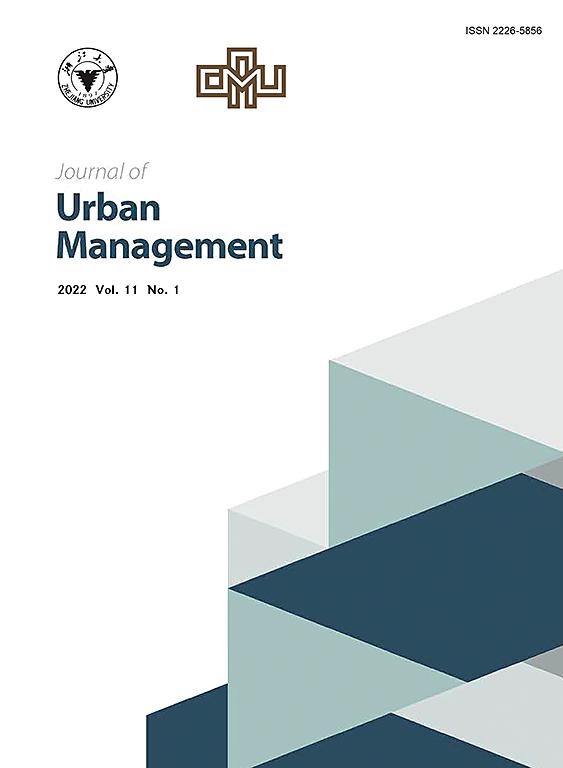
|
Harini Santhanam, Rudrodip Majumdar Assistant Professors, Energy, Environment and Climate Change Programme Quantification of green-blue ratios, impervious surface area and pace of urbanisation for sustainable management of urban lake - land zones in India -a case study from Bengaluru city https://authors.elsevier.com/sd/article/S2226-5856(22)00018-8 Journal of Urban Management, Elsevier, 28 March 2022 The study describes the creation of four simple metrics to estimate: 1. the ratio of ‘green’ vegetated areas to the ‘blue’ water spread areas, defined as the ‘Green-blue ratio’ (GBA); 2. The ratio of ‘blue’ water spread areas to ‘built-up’ ratio around the lakes, defined as the ‘Blue to Built-up ratio’ (BBA), 3. the percentage of impervious surface area (ISA) and 4. the pace of urbanisation in the dynamic zones (DZ) of urban lake environments. |

|
Harini Santhanam co-authored Assistant Professor, Energy, Environment and Climate Change Programme Assessment of Socio-technical Constraints of Marine Fishers in the Utilisation of Marine Fishery Advisories in Southern Odisha, India https://doi.org/10.1007/s44177-022-00014-4 Anthropocene Science, 2022 (Co-authored with Sudip Kumar Kundu) A case study from Odisha, India on the socio-technical constraints among fishers to utilise the services of marine fishery advisories provided to them. |

|
Harini Santhanam co-authored Assistant Professor, Energy, Environment and Climate Change Programme Ecosystem-based approaches to develop a monitoring framework for restoring the transitional lagoon ecosystem of Pulicat, India https://doi.org/10.1016/j.ecoleng.2022.106608 Ecological Engineering, Volume 179, June 2022 (Co-authored with Shalini Dhyani, and Sudip Kumar Kundu) An analysis of the transformational processes, habitat fragmentation and resilience of Pulicat lake, India, a coastal ecosystem is presented in this co-authored publication.
|

|
Harini Santhanam co-edited Assistant Professor, Energy, Environment and Climate Change Programme Blue-Green Infrastructure Across Asian Countries https://doi.org/10.1007/978-981-16-7128-9 eBook ISBN 978-981-16-7128-9, Edition Number 1, 25 March 2022 (Co-edited) This edited book discusses Blue-Green Infrastructure (BGI) from conception to implementation in building resilience and urban sustainability. The book emphasizes on infrastructures, institutions, and perceptions as three main pillars of implementing and managing successful BGI, with a special focus on Asia. |

|
Tejal Kanitkar Associate Professor, Energy, Environment and Climate Change Programme Is India concerned about its energy security? https://www.theindiaforum.in/article/india-concerned-about-its-energy-security The India Forum, 2 October 2020. 7 pages. India's overambitious targets for solar energy could destabilize its power sector and threaten energy security. Rather than 'green' political posturing, the country must plan an energy transition based on its developmental interests. |

|
Tejal Kanitkar co-authored A jolt to national energy security. The Hindu, 19 May 2020. |

|
Tejal Kanitkar co-authored Slowdown not the answer to clean air Frontline 37(12): 31-33. 19 June 2020. |

|
Tejal Kanitkar co-authored Why farmers are protesting )Electricity Amendment Bill, 2020. News Click, 16 December 2020 |

|
Tejal Kanitkar co-authored No, the lockdown is not a green moment. The Hindu, 22 May 2020. |

|
Tejal Kanitkar A time for extraordinary action The Hindu, 10 April 2020. |

|
Tejal Kanitkar What the 9-minute event means for the power grid. News Click, 4 April 2020. |

|
Tejal Kanitkar Why India’s Covid-19 package is grossly inadequate. News Click, 2 April 2020. |

|
Tejal Kanitkar Reject this inequitable climate proposal. The Hindu, 18 September 2020. |

|
Tejal Kanitkar A time for extraordinary action. The Hindu, 10 April 2020. |

|
Tejal Kanitkar Power Play. Frontline 37(14): 75-78, 17 July 2020. |

|
Tejal Kanitkar An incomplete story of the political economy of the power sector. Review of “Mapping power: The political economy of electricity in India’s states” by Navroz K Dubash, Sunila S Kale and Ranjit Bharvirkar New Delhi: Oxford University Press, 2018. Economic & Political Weekly 55(42): 27-28. |

|
Tejal Kanitkar Energy storage options for a renewable intensive future 01 October 2019. |
| Climate strike on September 20: What does and should it mean for Indian scientists? NewsClick, 17 Sep 2019. |
|

|
Tejal Kanitkar Modi’s 450 GW renewable energy: Who will foot the bill? NewsClick, 26 Sep 2019. |

|
Tejal Kanitkar Story of COP25: Climate ambition in the face of climate inaction NewsClick, 17 Dec 2019. |
| R Srikanth co-authored How to make coal mining sustainable The Hindu Business Line, 25 November 2019 |
|
| R Srikanth co-authored Sustainability of coal mining: Challenges and way forward NIAS Workshop Report No. NIAS/NSE/EEP/U/WR/071/2019 |
|
| R Srikanth co-authored Implementation of clean coal technologies to comply with “New Emission Norms” for thermal power plants - Way forward for Southern region Summary report of NITI-Aayog-DST Workshop, 17 September 2019, NIAS Workshop Report No. NIAS/NSE/EEP/U/WR/13/2019 |
|
| R Srikanth co-authored Spatial-temporal variations in the ambient air concentrations of particulate pollutants in and around coal mines and thermal power plants: A case study in Telangana, India NIAS Research Report No. NIAS/NSE/EEP/U/RR/16/2019 |
|
| R Srikanth co-authored Optimal Electricity Mix for the Southern Region. NIAS Workshop Report No. NIAS/NSE/EEP/U/WR/07/2020 |
|
| R Srikanth co-authored Sustainability of Coal Mining: Case study of Dorli-Bellampalli coal mines NIAS Research Report No. NIAS/NSE/EEP/U/RR/06/2020 |
|
| R Srikanth, Soumya Deep Das co-authored Transition path to promote renewable energy by DISCOMs. Renewable Energy Summit. New Delhi: India Energy Forum |
|
| R Srikanth, Harini Santhanam co-authored Pit lakes as sustainable post-closure interventions for open-cast coal mines in the Indian context Aqua Foundation's XIII World Aqua Congress: International Conference and Exhibition. New Delhi: Aqua Foundation's XIII World Aqua Congress |
|
| R Srikanth, V P Lavanyaa co-authored Air quality in Bengaluru improves significantly post the lockdown BusinessLine, 6 May 2020 |
|
| R Srikanth Costly solution: Careful on flue gas Desulphurisers Financial Express, 27 July 2020 |
|
| R Srikanth Govt may do away with mandatory washing of coal for thermal power units The Pioneer, 18 May 2020 |
|
| R Srikanth Executive Summary of the DST – NIAS Stakeholder Consultation workshop to discuss the NIAS Transition Plan for an Integrated Approach to Development and Environment in the Power Sector, DST – NIAS Virtual Workshop January 23, 2021 NIAS Workshop Report No. NIAS/NSE/EEP/U/WR/03/2021 |
|
| S S Meenakshisundaram Visiting Professor, Energy, Environment and Climate Change Programme Book Review of ‘Indian Fiscal Federalism’ by Y.V. Reddy and G.R Reddy New Delhi: OUP, 2019. Aarthika Charche 4(2): 78-79. |
|
| S Ranganathan co-authored Honorary Visiting Professor, Energy, Environment and Climate Change Programme A landscape analysis of fortification in Tamil Nadu using satellite images. Heritage: Journal of Multidisciplinary Studies in Archaeology 7: 195-210. |
|

|
Rudrodip Majumdar, Sandip K Saha co-authored Modelling of open thermochemical energy storage system for space heating using reduced order model. Proceedings of 25th National and 3rd International ISHMT-ASTFE, Heat and Mass Transfer Conference (IHMTC-2019). Paper ID: ENE-170 (6 pages). |

|
Rudrodip Majumdar, Sandip K Saha co-authored Study on the behaviour of thermal stratification in encapsulated PCM-based storage system. Proceedings of 25th National and 3rd International ISHMT-ASTFE, Heat and Mass Transfer Conference (IHMTC-2019), Paper ID: PCM-441. (6 pages). |

|
Rudrodip Majumdar, Sandip K Saha co-authored Performance evaluation of an open thermochemical energy storage system integrated with flat plate solar collector. Applied Thermal Engineering 173: 115218 (19 pages). |

|
Rudrodip Majumdar Assistant Professor, Energy, Environment and Climate Change Programme Tuberculosis: A brief overview and recent advancements in clinical treatment. Tuberculosis Newsletter 1(1): 9-11. |

|
Rudrodip Majumdar Assistant Professor, Energy, Environment and Climate Change Programme proximity during COVID-19 pandemic. Tuberculosis Newsletter 1(2): 27-31. |

|
Tejal Kanitkar Framework for energy economy and emissions modeling: A case for India Energy 167: 670-679. |

|
Tejal Kanitkar Equity in long-term mitigation In: India in a Warming World: Integrating Climate Change and Development edited by Navroz K. Dubash. New Delhi: Oxford University Press, pp. 92-113. |

|
Tejal Kanitkar An integrated framework for energy-economy-emissions modelling: A case study of India. Springer International. |

|
Rudrodip Majumdar co-authored Assistant Professor, Energy, Environment and Climate Change Programme Comparative evaluation of circular truncated-cone and paraboloid shapes for thermal energy storage tanks based on thermal stratification performance. Journal of Energy Storage 34:102191. |

|
Rudrodip Majumdar co-authored Assistant Professor, Energy, Environment and Climate Change Programme Novel dimension scaling for optimal mass flow rate estimation in low- temperature flat plate solar collector based on thermal performance parameters. Thermal Science and Engineering Progress 19: 100569. |

|
Rudrodip Majumdar, Sandip K Saha co-authored Computational study of the performance of cascaded multi-layered packed-bed thermal energy storage for high temperature applications. Journal of Energy Storage 32: 101930. |

|
Rudrodip Majumdar co-authored Assistant Professor, Energy, Environment and Climate Change Programme Hybridisation of geothermal source with ORC-based load loop for uninterrupted generation of steady power. https://www.tandfonline.com/doi/abs/10.1080/14786451.2021.1895779 International Journal of Sustainable Energy |
| R Srikanth, A V Krishnan co-authored Transition plan for thermal power plants NIAS Policy Brief No. NIAS/NSE/EEP/U/PB/17/2020 |
|
| R Srikanth, Sarvajeet Kumar Sinha co-authored Sustainable coal mining – stakeholder consultation workshop |
|
| R Srikanth Report of the expert group on washing of thermal coal is vital for India New Delhi: Coal Preparation Society in India |
|
| R Srikanth Coal mining technology and practices in India: Challenges and prospects. In: Future of Coal in India: Smooth Transition or Bumpy Road Ahead? Notion Press and Brookings India |
|
| R Srikanth, Soumya Deep Das co-authored Viability of power distribution in India – challenges and way forward. Energy Policy 147: 111882 |
|
| Janaki Balakrishnan Professor and Head, Energy, Environment and Climate Change Programme The lengthening pendulum: Adiabatic invariance and bursting solutions. Physics Open 7: 100067. |
|
| Janaki Balakrishnan Professor and Head, Energy, Environment and Climate Change Programme Burst mechanisms and burst synchronization in a system of coupled type-I and type-II neurons Communications in Nonlinear Science and Numerical Simulation 90: 105391. |
|
| Harini Santhanam co-authored Assistant Professor, Energy, Environment and Climate Change Programme Sustainability of Coal Mining: Case study of Dorli-Bellampalli coal mines. NIAS Research Report No. NIAS/NSE/EEP/U/RR/06/2020). |
|
| Harini Santhanam, R Srikanth co-authored Harini Santhanam is Assistant Professor; R Srikanth is Professor and Dean, Energy, Environment and Climate Change Programme Pit lakes as sustainable post-closure interventions for open-cast coal mines in the Indian context. Aqua Foundation's XIII World Aqua Congress: International Conference and Exhibition. New Delhi: Aqua Foundation's XIII World Aqua Congress. |
|

|
Rudrodip Majumdar, Harini Santhanam co-authored Rudrodip Majumdar is Assistant Professor; Harini Santhanam is Assistant Professor, Energy, Environment and Climate Change Programme Permeable pavements as sustainable nature-based solutions for the management of urban lake ecosystems In: Nature-based Solutions for Resilient Ecosystems and Societies, Disaster Resilience and Green Growth edited by Shalini Dhyani, Anil Kumar Gupta and Madhav Karki. Singapore: Springer, pp. 329-345. |

|
Rudrodip Majumdar Assistant Professor, Energy, Environment and Climate Change Programme Sludge hygienisation+ - a novel technology for urban areas to deal with incursion of COVID-19 viral particles in wastewater In: The Impact of the COVID-19 Pandemic on Green Societies: Environmental Sustainability edited by Chinmay Chakraborty, Swapnila Roy, Susmita Sharma. and Tien Anh Tran, Switzerland: Springer Nature, pp. 263-286. |
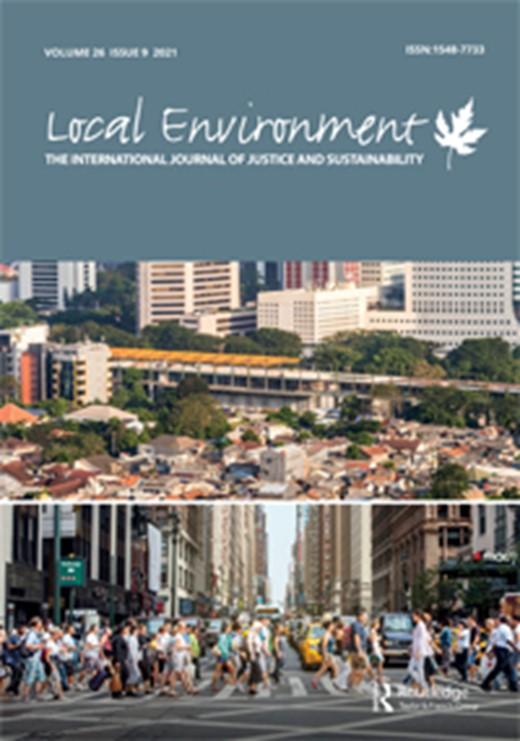
|
Harini Santhanam, Sudip Kumar Kundu Harini Santhanam is Assistant Professor; Sudip Kumar Kundu is PhD Scholar, Energy, Environment and Climate Change Programme A report on the impacts of cyclone Yaas over a fish landing center vulnerable to cyclonic storms and natural hazards – Talsari, Northern Odisha https://doi.org/10.1080/13549839.2021.1964457 September 2021 The present work reports the actual ground conditions prevalent at a fish landing center in Northern Odisha, namely, Talsari in the aftermath of the cyclone “Yaas”, which made landfall on May 26th, 2021. The coastal vulnerability and the impacts of the cyclone are discussed. |
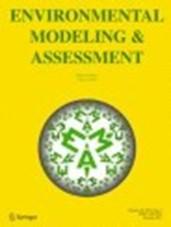
|
R Srikanth, J Singh, S K Ramasesha Professor and Head, Energy, Environment and Climate Change Programme Dispersion of Particulate Matter and Sulphur Oxides from Thermal Power Plant: A Case Study https://rdcu.be/crQaW Envrionmental Modeling and Assesmnet, August 2021 Power generation from Thermal Power Plants (TPP) in India forms the backbone of the power system. In this study, the dispersion of particulate matter and sulphur dioxide from a TPP with a 275 m-high stack are studied under different atmospheric conditions up to a distance of 30 km from the stack. Based on the results, policy changes that need to be implemented are suggested. |

|
Rudrodip Majumdar co-authored Assistant Professor, Energy, Environment and Climate Change Programme Hybridization of geothermal source with ORC-based load loop for uninterrupted generation of steady power https://www.tandfonline.com/doi/full/10.1080/14786451.2021.1895779 International Journal of Sustainable Energy, March 2021 The dynamic performance of a hybrid power plant configuration comprising of a ground heat exchanger and an organic Rankine cycle (ORC) for power generation at the load end is studied. The simulation of dynamic characteristics demonstrates that the proposed geothermal-ORC hybrid system is capable of producing a steady power output of approximately 86.3 kWt. The exergy efficiency of U-shaped BHE without insulation is found to be the maximum. |
| |
Tejal Kanitkar, Nikhil Thejesh, Upasna Ranjan Tejal Kanitkar is Associate Professor; Nikhil Thejesh is Research Fellow; Upasna Ranjan is Research Fellow, Energy, Environment and Climate Change Programme Cost of avoided carbon: Optimizing power supply in southern India https://doi.org/10.1016/j.enpol.2020.111988 Energy Policy, February 2021 This paper analyses the power supply situation in Southern India for the year 2018 to evaluate the impact of renewable energy policies on energy costs and the resulting cost of avoided carbon. An optimization model is built using GAMS. Validating the model results against actual data for the year 2018 suggests that regulatory constraints and policy interventions have reduced the solution space for reasonable cost-based optimization in Southern India. |

|
Sarvajeet Kumar Sinha, Hippu Salk Kristle Nathan, R Srikanth PhD Scholar, Energy, Environment and Climate Change Programme Why India needs a Coal Mines Environment Authority https://res.us2.list-manage.com/track/click?u=4c96385cee36c21eb5f2510c4&id=1dc0103f32&e=2eb0e0e188 Economic & Political Weekly, 18 December 2021 Given India’s continued dependence on coal to supply 24x7 power for industrial and residential consumers at affordable prices, the country needs a unified Coal Mines Environment Authority staffed with multi-disciplinary expertise to assess and minimize the adverse environmental impacts of coal mines with an integrated approach to ensure more efficient, effective and transparent environmental governance. |

|
Tejal Kanitkar Associate Professor, Energy, Environment and Climate Change Programme Equity in Global Climate Policy and Implications for India’s Energy Future https://res.us2.list-manage.com/track/click?u=4c96385cee36c21eb5f2510c4&id=95ad7da38a&e=2eb0e0e188 Economic & Political Weekly, 25 December 2021 |
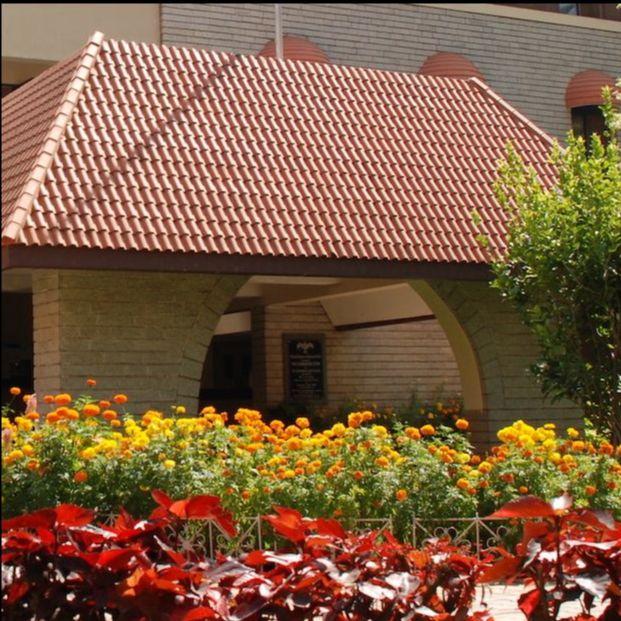
|
Gufran Beig, R Srikanth, Dr. Shailesh Nayak Gufran Beig is Sir Ashutosh Mukherjee Chair Professor; R Srikanth is Professor and Head, Energy, Environment and Climate Change Programme; Dr. Shailesh Nayak is Director, NIAS Air Quality, National Standards and Human Health in India NIAS Policy Brief, 08 December 2021 The World Health Organization (WHO) recently (Sep 2021) released its revised Air Quality Guidelines (AQGs) which have been made more stringent compared to their earlier guidelines. This raises the question whether India’s National Ambient Air Quality Standards (NAAQS) notified by the MoEFCC in 2009 are adequate and whether the revised WHO AQGs are relevant for India. The natural corollary to this is to identify the policies and actions required to strengthen the science of risk assessment and develop rational estimates of mortality and morbidity attributed to air pollution amongst the population in India. These issues have been examined in the NIAS Policy Brief to recommend the way forward. |

|
Rudrodip Majumdar, Harsh Kamath, A V Krishnan, R Srikanth co-authored Assistant Professor, Energy, Environment and Climate Change Programme Cost and environmental benefits of coal-concentrated solar power (CSP) hybridization in India https://www.sciencedirect.com/science/article/abs/pii/S0360544221030541 Energy (Elsevier), 02 December 2021 The levelized cost of electricity (LCOE) and environmental advantages of coal-CSP hybrid systems are presented by simulating the hybrid system in two modes at three locations in India with contrasting DNI profiles. The cost of additional energy generated due to SAFWH in booster mode is up to 51.4% less as compared to a stand-alone CSP. In the fuel saver mode, up to 40 thousand tons of coal can be annually saved with SAFWH, thus reducing CO2 emissions by 1.7% as compared to a stand-alone coal-fired plant. |
| |
Sarvajeet Kumar Sinha, R Srikanth Sarvajeet Kumar Sinha is PhD Scholar; R Srikanth is Professor and Head, Energy, Environment and Climate Change Programme DST - NIAS Sustainable Pathways to Energy Utilisation – Volume 1: Improving the environmental governance of coal mines in India through a unified authority https://www.nias.res.in/publication/dst-–-nias-sustainable-pathways-energy-utilisation-–-volume-1-improving-environmental NIAS Research Report, June 2021 The authors propose a “Sustainable Coal Mining (SCM) Bill” to constitute a unified authority named “Coal Mines Environment Authority” to enhance the effectiveness, efficiency, and transparency of the environmental regulation of coal mines. Besides the draft SCM Bill, the authors also explain the enabling amendments required in the existing environment, forest, and mining Laws to enact the SCM Bill. |
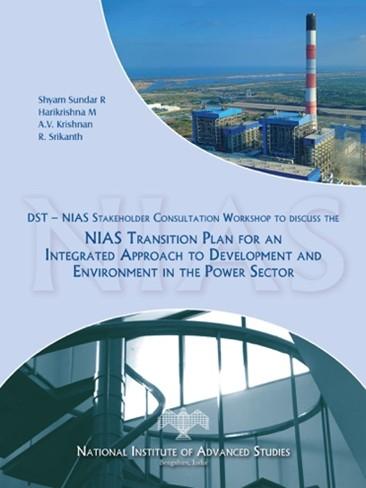
|
Shyam Sundar R, Harikrishna M, A V Krishnan, R Srikanth Shyam Sundar R is Research Fellow; Harikrishna M is Post-Doctoral Fellow; A V Krishnan is Visiting Professor; R Srikanth is Professor and Head, Energy, Environment and Climate Change Programme DST – NIAS Stakeholder Consultation workshop to discuss the NIAS Transition Plan for an Integrated Approach to Development and Environment in the Power Sector https://www.nias.res.in/publication/dst-–-nias-stakeholder-consultation-workshop-discuss-nias-transition-plan-integrated NIAS Workshop Report, March 2021 This report describes the research conducted by NIAS to develop an optimal transition plan for India’s power sector and concludes with policy recommendations for an orderly transition to a more environment-friendly generation mix for South India by 2030. |
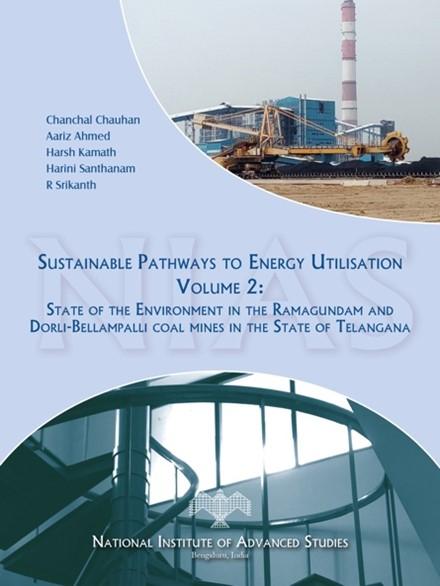
|
Chanchal Chauhan, Aariz Ahmed, Harini Santhanam, R Srikanth, Harsh Kamath Chanchal Chauhan is PhD Scholar; Aariz Ahmed is PhD Scholar; Harini Santhanam is Assistant Professor; R Srikanth is Professor and Head, Energy, Environment and Climate Change Programme DST – NIAS Sustainable Pathways to Energy Utilisation – Volume 2: State of the Environment in the Ramagundam and Dorli-Bellampalli coal mines in the State of Telangana https://www.nias.res.in/publication/dst-–-nias-sustainable-pathways-energy-utilisation-–-volume-2-state-environment NIAS Research Report, June 2021 The research report focuses on the Spatio-temporal trends in air quality, vegetation, and water quality before, during, and after the closure of opencast coal mines in India. Besides, Aerosol Optical Depth and Normalised Difference Vegetation Index have also been extracted to study the long-term trends in Particulate Matter concentrations and vegetation cover, respectively. The report concludes with policy recommendations to improve the sustainability of the coal sector. |
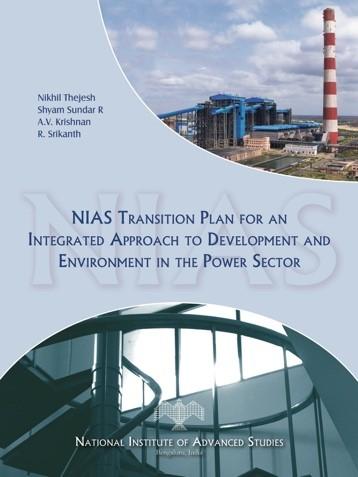
|
Nikhil Thejesh, Shyam Sundar R, A V Krishnan, R Srikanth Nikhil Thejesh is Research Fellow; Shyam Sundar R is Research Fellow; A V Krishnan is Visiting Professor; R Srikanth is Professor and Head, Energy, Environment and Climate Change Programme NIAS Transition Plan for an Integrated Approach to Development and Environment in the Power Sector https://www.nias.res.in/publication/nias-transition-plan-integrated-approach-development-and-environment-power-sector NIAS Research Report, August 2021 The NIAS Transition plan for India’s power sector involving the progressive retirement of 36 GW of capacity in 211 obsolete Thermal Power Plants (TPP)s based on key performance parameters and shifting their load to upcoming modern TPPs and Nuclear Power Plants. Implementation of the NIAS Transition Plan will enable the National Grid to meet the peak demand up to March 2030 with lower Capex and tariffs while reducing coal consumption, water requirement, air pollution, and CO2 emissions. |
| |
Soumya Deep Das, R Srikanth Soumya Deep Das is Doctoral Student; R Srikanth is Professor and Head, Energy, Environment and Climate Change Programme Viability of power distribution in India – Challenges and Way Forward https://doi.org/10.1016/j.enpol.2020.111882 Energy Policy, December 2020 Power distribution companies (DISCOMs) in India are experiencing financial stress. The high cost of power procurement is one of the key reasons for this financial stress. This is mainly due to a fragmented approach to power sector reforms. The authors offer insights and propose recommendations to address this situation. |
| |
Rudrodip Majumdar co-authored Assistant Professor, Energy, Environment and Climate Change Programme Comparative evaluation of circular truncated-cone and paraboloid shapes for thermal energy storage tanks based on thermal stratification performance https://www.sciencedirect.com/science/article/abs/pii/S2352152X20320144 Energy Storage, December 2020 Thermal stratification characteristics are investigated and analyzed in detail for three chosen shapes of TES, namely truncated-cone, paraboloid, and cylinder, using a two-dimensional unsteady numerical model. Results of the numerical model on cylindrical TES is found to have good agreement with the findings of the in-house experiments. . At every AR investigated for the two shapes of TES, Richardson number for the paraboloid TES is greater than that of the truncated-cone TES, qualitatively suggesting a better temperature stratification in the paraboloid TES. |
| |
Sarvajeet Kumar Sinha, R Srikanth Sarvajeet Kumar Sinha is PhD scholar; R Srikanth is Professor and Head, Energy, Environment and Climate Change Programme Stakeholder Consultation Workshop on a Draft Sustainable Coal Mining Bill: Report of SERB https://www.nias.res.in/publication/dst-%E2%80%93-nias-stakeholder-consultation-workshop-discuss-nias-transition-plan-integrated NIAS Virtual Workshop Report, October 2020 As part of a SERB-funded research Project, NIAS drafted proposals for a “Sustainable Coal Mining Bill” and an “Environment, Forest, and Mineral Laws (Amendment) Bill,” to create a unified, empowered, and inter-disciplinary environmental regulator for coal mines. These proposals were discussed during a virtual stakeholder consultation workshop on September 5, 2020. |
| |
Rudrodip Majumdar co-authored Assistant Professor, Energy, Environment and Climate Change Programme Computational study of the performance of cascaded multi-layered packed-bed thermal energy storage for high-temperature applications https://www.sciencedirect.com/science/article/abs/pii/S2352152X20317667 Energy Storage, October 2020 In this study, a tractable and computationally fast numerical model comprising of two simplified non-equilibrium energy equations for the working fluid and the phase change material (PCM), respectively, is developed to account for the radiation effects at the high temperatures in the cascaded multi-layered packed bed latent heat thermal energy storage (PBLTS). It is found that the radiative heat transfer plays a significant role at high temperature (> 650 °C) in dictating the performance of the thermal energy storage system during the charging operation. |
| |
Tejal Kanitkar, Sudha Mahalingam, R Srikanth Tejal Kanitkar is Associate Professor; Sudha Mahalingam is Visiting Professor; R Srikanth is Professor and Head, Energy, Environment and Climate Change Programme Electricity (Amendment) Bill 2020: Inviting a bigger crisis https://www.epw.in/journal/2020/41/special-articles/electricity-amendment-bill-2020.html October 2020 The paper analyses the proposed Electricity (Amendment) Bill, 2020 which is aimed at reducing subsidies and encouraging privatization, especially in the distribution segment of the power sector. The paper argues that the central government must hold off on passing any hasty legislation on the subject and adopt a more scientific and less ideological approach to deal with the travails of the power sector. |
| |
R Srikanth, A V Krishnan R Srikanth is Professor and Head; A V Krishnan is Visiting Professor, Energy, Environment and Climate Change Programme NIAS Transition Plan for Thermal Power Plants in India NIAS Policy Brief, September 2020 The NIAS Transition Plan for Thermal Power Plants (TPPs) recommends the progressive retirement of obsolete TPPs while shifting the load to existing and under-construction, modern TPPs and Nuclear Power Plants (NPPs) instead of retrofitting them with costly Flue Gas Desulfurisers (FGDs). Stack heights mandated for TPPs in India are designed to disperse SO2 emissions to ensure that ambient air SO2 levels comply with National standards. FGDs must be mandated only for TPPs in urban or sensitive or highly polluted areas since they increase specific CO2 emissions and water requirements and also hike tariffs. TPPs can use washed coal and retrofit high-performance Electrostatic Precipitators to reduce Particulate Matter (PM) emissions by 99.97 per cent without major capex. |
| |
Tejal Kanitkar co-authored Associate Professor, Energy, Environment and Climate Change Programme Impact of the Covid 19 pandemic on the Indian economy: A critical assessment http://ec2-3-108-111-222.ap-south-1.compute.amazonaws.com/niastestweb/sites/default/files/2022-03/2020-WP-18-Tejal-Kanitkar-Final.pdf NIAS Working Paper, September 2020 This paper analyses the economic impact of Covid-19 in India. It documents the trajectory of infections and the lockdown and evaluates the extent of economic losses due to the lockdown. It also critically assesses the economic response of the Indian government to the pandemic and the lockdown. |
| |
Harini Santhanam co-authored Assistant Professor, Energy, Environment and Climate Change Programme Saturation indices of aqueous mineral phases as proxies of seasonal dynamics of a transitional water ecosystem using a geochemical modeling approach. https://link.springer.com/article/10.1007%2Fs40808-020-00910-x Modeling Earth Systems and Environment, August 2020 In line with the recent research on coastal ecosystems, the present investigation details the changes in environmental parameters modeled as a function of their spatial and temporal distributions (dry and wet seasons) in a transitional aquatic ecosystem in South India, Pulicat lagoon using a geochemical model and saturation indices. |

|
Tejal Kanitkar Associate Professor, Energy, Environment and Climate Change Programme Is India concerned about its energy security? https://www.theindiaforum.in/article/india-concerned-about-its-energy-security The India Forum, September 2020 India's overambitious targets for solar energy could destabilize its power sector and threaten energy security. Rather than 'green' political posturing, the country must plan an energy transition based on its developmental interests. |
| |
Tejal Kanitkar Associate Professor, Energy, Environment and Climate Change Programme The COVID-19 lockdown in India: Impacts on the economy and the power sector. https://doi.org/10.1016/j.glt.2020.07.005 Global Transitions, August 2020 This paper demonstrates the use of a linear Input-Output (IO) model to estimate the economic losses in India due to COVID-19. The results show that depending on the duration of the lockdown, the Indian economy is likely to face a loss of about 10–31% of its GDP. The paper also discusses the impacts of COVID-19 on the demand and supply of electricity and CO2 emissions from the power sector. The cost of avoided carbon is approximately 186–264 $/tCO2. |
| |
Tejal Kanitkar co-authored Associate Professor, Energy, Environment and Climate Change Programme Impact of COVID-19 pandemic on the Indian economy: A critical analysis. http://dx.doi.org/10.22201/fe.01851667p.2021.315.76845 Investigation Economica, July 2020 This paper is an analysis of the economic impact of the Covid-19 pandemic in India. The economic crisis after March 2020 affected all the sectors of the Indian economy and led to a loss of employment to the tune of at least 15 million. Using an Input-Output (I-O) framework, we create four scenarios of losses to the Indian economy. We estimate that India’s GDP growth rate in 2020-2021 may range from –4.3% to –15%. |
| |
Rudrodip Majumdar co-authored Assistant Professor, Energy, Environment and Climate Change Programme Novel Dimension Scaling for Optimal Mass Flow Rate Estimation in Low-Temperature Flat Plate Solar Collector based on Thermal Performance https://www.sciencedirect.com/science/article/abs/pii/S2451904920300871 Thermal Science and Engineering Progress, May 2020 In this study, a simplified energy equations-based dynamic model is used to develop working relationships for calculating the collector dimensions and the optimum heat transfer fluid (HTF) mass flow rate for achieving a predefined thermal efficiency. The computational results for the geometrical configuration corresponding to an average DNI, calculated from actual solar radiation data, indicate that to achieve a fixed temperature and a collector efficiency, the required HTF mass flow rate increases with an increasing level of solar radiation. |

|
NIAS Wednesday Discussion International Collaborations in Basic Research and Conflicts between Nations Dinesh Kumar Srivastava, Homi Bhabha Chair Professor, Energy, Environment and Climate Change Programme, School of Natural Sciences and Engineering Lecture Hall 06 April 2022 |










